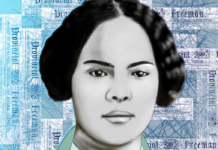Ten-year-old Gavin Williams is a lively and affectionate youngster who loves to visit museums, experiment with computer-coding and plunge into ocean waves with his boogie-board.
Gavin is also a fifth-grade student with disabilities who, his mother Sarah told me, has been effectively abandoned by his New Jersey district during COVID-19 school closures. While the quality of remote instruction offered by schools throughout the country varies from desultory to ambitious—an ongoing survey by the Center for Reinventing Public Education reports that over one-third of districts aren’t offering any remote instruction at all, in Philadelphia all online instruction is optional but others continue to up their game in regards to curriculum, instruction, progress monitoring and differentiation—this extended hiatus from traditional education will be most harmful to those who have the most to lose.
One of those groups is students with disabilities. While the guidance from U.S. Education Secretary Betsy DeVos has been confusing, we know that schools are obligated to try to find ways—“virtually, online or telephonically”—to provide special needs students with mandated services like speech and occupational therapies. While some schools are fulfilling this obligation, others aren’t. For children like Gavin, the consequences may be severe.
GAVIN’S STORY
Gavin was diagnosed at age 3 with autism and ADHD. While he tests above grade-level in math, over the last seven years specialists have identified a number of obstacles that interfere with his academic and social development. These include fine motor delays, social skills deficits, pragmatic language and communication deficits, executive functioning problems, tactile defensiveness, aggression and decreasing self-esteem (likely a result of bullying at school).
He has an Individualized Education Plan (IEP) that places him in a general education classroom with services that are supposed to give him the support he needs to maximize his academic growth, including:
- Two sessions a week of occupational therapy.
- Two sessions a week of speech therapy.
- One session a week for counseling and social skills training
- The assistance of a special education aide for 60 minutes a day in reading and 30 minutes a day in writing.
Of course, during this pandemic, Gavin’s therapists and aide can’t sit side-by-side with him. Yet the New Jersey Department of Education’s guidance during COVID-19 school closures mandates this:
Home instruction shall be consistent with the student’s Individualized Education Plan Program (IEP) to the most appropriate extent possible. Districts should talk to parents, who are key members of the IEP team, and help them consider how they may best ensure that students with disabilities have the necessary supports, including medical supports, in place during a public health-related school closure. Consultation with the parents should explore how students with disabilities will gain equitable access to home instruction.
Or, as the National Center for Special Education in Charter Schools wrote last week, “such services under IDEA [Individuals with Disabilities Education Act] are not optional—there is no hardship exemption that state or local education agencies can fall back on…[T]he education of students with disabilities must not be forgotten.”
Yet, says Sarah, she’s received no “consultation” to ensure Gavin has “necessary supports” to access home instruction and, as far as she’s concerned, he’s been “forgotten.” Examples: During this fourth week of school closures, his occupational therapist has him watching YouTube videos on how to tie his shoes. Neither Gavin nor his mother has access to his speech therapist except through Google Classroom—and she is slow to respond. Sarah showed me an assignment from this therapist, a worksheet that asks him to put in proper order the steps for making a grilled cheese sandwich. (After Gavin completes the sheet, Sarah has to print it, scan it and send it back as an attachment.)
It doesn’t have to be this way for Gavin. As proof, some schools are rising to the challenge of finding creative ways to engage students with disabilities.
- A school in Georgia is providing a student much like Gavin with video lessons; his teacher calls daily to go over work that he finds difficult.
- At a school in New Jersey therapists check in with their students at least once a day to “troubleshoot any problems that families might be having.”
- At a school in California, a class of second and third-graders with moderate disabilities watch at home on their computers (supplied by the district) as their teacher leads them through exercises and games like “Simon Says.” She supplies families with a checklist to help guide children through the daily schedule and spends hours each day calling, texting, emailing, and video-chatting with parents.
Are these efforts as effective as in-person therapies and instructional strategies? Of course not. But they can mitigate the academic and social impact of long -term school closures on this especially vulnerable population.
Back in New Jersey, Sarah reports that Gavin is regressing in speech and behavior. He’s recently told her that he “hates reading,” even when she tries to read his favorite book—”James and the Giant Peach”—to him. “I think he’s depressed,” she said. “He’s under so much stress. I don’t know how this works whenever he goes back to school.”
THIS STRUGGLE FOR EQUITY AND ACCESS ISN’T NEW
Dale Chu, a former teacher, principal and education policy expert, notes that the problems districts are having with remote instruction, especially for students with disabilities, are not solely due to the pandemic. IDEA, he wrote recently, “has always been poorly enforced and state mandarins have often failed to take their responsibility seriously. Now everyone is supposed to believe that these same officials have magically seen the light on equity and access simply because their brick-and-mortar buildings are shuttered?”
In other words, Sarah’s long struggle to get Gavin’s needs met isn’t new or pandemic-induced; indeed, she’s been fighting for his rights since he started kindergarten. There’s been no magical epiphany for officials newly aware that we’ve long failed to provide special needs students with equity and access and it’s unlikely that COVID-19 will change that.
Hospitals are using triage while they treat people stricken with the coronavirus, rationing care when ventilators are scarce. Washington State recommends that patients with “loss of reserves in energy, physical ability, cognition and general health” be given palliative rather than curative care, which disability advocacy groups say is “leaving people with disabilities to die.”
No one is leaving Gavin to die, but his remote education is being triaged. It doesn’t have to be this way; other schools are finding ways for students with disabilities to learn at home, to be creative with therapies and accommodations, to search for innovative ways to deliver instruction during a crisis that exacerbates the inequities embedded in our public education system.
Those students, the victims of those inequities, are often forgotten. One of them is named Gavin Williams.
_____________
This article was first posted on njleftbehind.org










